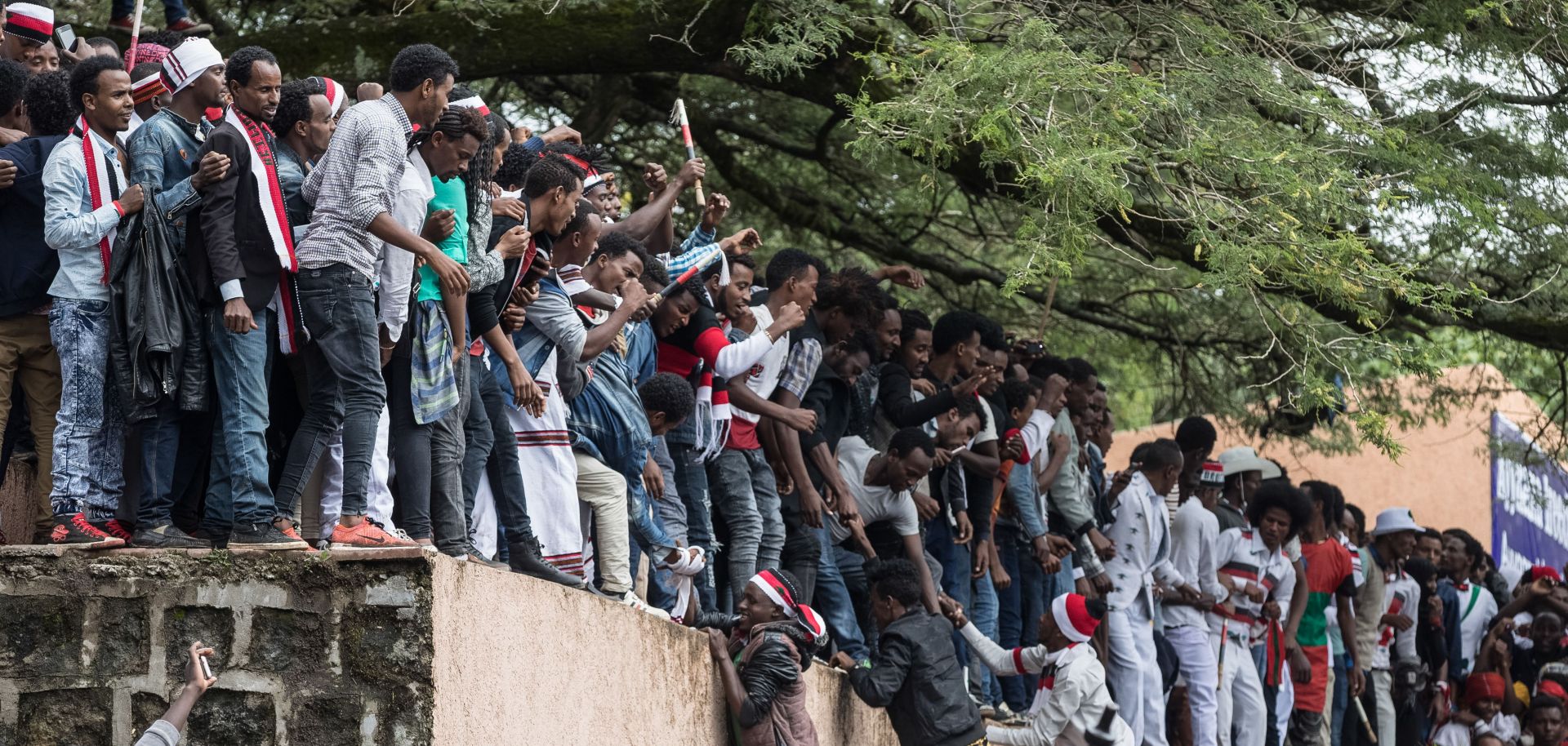ASSESSMENTS
The Long-Running Headache of Minority Rule in Ethiopia
Mar 1, 2018 | 12:33 GMT

Ethiopians protest against the government in 2017 during the annual Oromo festival to celebrate the end of the rainy season. The Ethiopian religious festival transformed into a rare moment of open defiance. The Oromo people, Ethiopia's largest ethnic group, began months of anti-government protests in late 2015.
(ZACHARIAS ABUBEKER/AFP/Getty Images)
Highlights
- The domination of Ethiopia's military, key economic assets and ruling coalition by the minority Tigrayan ethnic group will make reconciliation with other protesting ethnic groups difficult.
- It is unlikely that the next prime minister will be able to quell the protests given the long-standing grievances against the current political system.
- Deeper reform will occur only when hard-line Tigrayan elites believe that security crackdowns are no longer able to crush dissent.
Subscribe Now
SubscribeAlready have an account?
